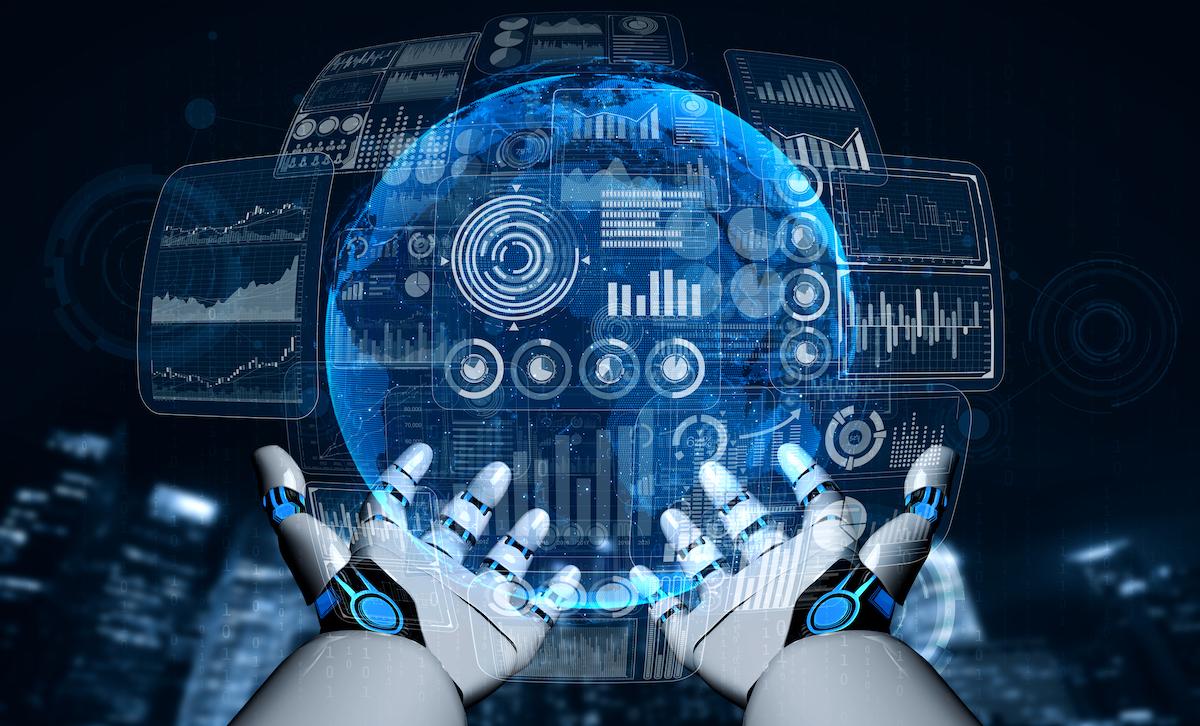Blog Title AI and Cybersecurity: Harnessing Technology’s Potential While Addressing Vulnerabilities
10 Potential Uses of AI In Improving Cybersecurity
AI is reshaping traditional digital landscapes, introducing a myriad of capabilities that redefine how organizations safeguard their critical assets.
1. Anomaly detection
AI excels at identifying unusual patterns or behaviors within vast datasets, making it an excellent tool for real-time threat identification and preventing or mitigating potential attacks. For instance, machine learning algorithms can learn the normal network behavior of an organization and quickly spot deviations that may indicate a security threat.
2. Behavioral analysis
The technology can analyze user behavior to distinguish between normal and suspicious activities. By understanding patterns such as login times, locations, and usage habits, AI systems can raise alerts when deviations occur. For example, accessing sensitive data outside regular working hours will be flagged as a potential insider threat.
3. Phishing detection
Machine learning algorithms can recognize phishing attempts by analyzing email content, sender behavior, and other factors. AI swiftly identifies and blocks phishing emails, reducing the likelihood of employees falling victim to fraudulent schemes and preventing unauthorized access to sensitive information.
4. Automated incident response
AI can automate the initial phases of incident response by swiftly identifying and isolating security incidents. For example, AI systems can automatically quarantine affected devices during a malware attack, minimizing response time and mitigating the impact of the incident.
5. Predictive analysis
You can forecast potential cyber threats with AI by analyzing historical data and identifying emerging trends. This allows you to implement preventive measures before exploiting new vulnerabilities. Moreover, AI algorithms can predict the likelihood of specific attacks based on recent global cyber threat trends.
6. Vulnerability management
AI helps identify and prioritize vulnerabilities by assessing the potential impact and exploitability. This enables organizations to focus their resources on patching critical vulnerabilities identified by the AI system.
7. User authentication
Enhance user authentication even if login credentials are compromised by incorporating biometric data, behavioral analytics, and multi-factor authentication. Some examples of these robust practices include facial recognition and fingerprint scans to add an extra layer of security.
8. Network security monitoring
AI continuously monitors network traffic in real-time for unusual activities or signs of a potential breach. This proactive analysis enables quick responses to security incidents, keeping organizations ahead of cyber threats.
9. Endpoint security
AI-powered endpoint protection detects and prevents malware infections on individual devices. These systems use machine learning to recognize the characteristics of known and unknown malware, providing a solid defense against evolving cyber threats that traditional antivirus software may struggle to detect.
10. Security automation
Automating routine cybersecurity tasks frees up human resources for more strategic and complex activities. Automated responses to specific security incidents, such as isolating compromised devices or blocking malicious IP addresses, can significantly reduce response times and enhance overall cybersecurity posture.
10 Possible Vulnerabilities of Using AI for Cybersecurity
As you implement AI to bolster your cybersecurity defenses, you must acknowledge the potential vulnerabilities that come with this technology. Here are ten potential vulnerabilities that merit attention in AI-driven cybersecurity.
1. Adversarial attacks
AI systems are susceptible to adversarial attacks, wherein threat actors manipulate input data to mislead the AI algorithms. By subtly altering input features, attackers can deceive your AI model, leading to incorrect or compromised decisions.
2. Bias and discrimination
If the data used to train these models contains inherent biases, the AI system may exhibit biased behavior, potentially discriminating against certain groups or scenarios. This poses ethical concerns and can lead to unintended consequences in cybersecurity decision-making.
3. Data poisoning
AI models are only as good as the data they are trained on. Compromised training data, whether intentional or unintentional, can lead to incorrect or insecure decisions by the AI system.
4. Model inversion attacks
By reverse-engineering the model, attackers seek to gain insights into the underlying data, potentially compromising the confidentiality of sensitive information. This vulnerability is particularly concerning in situations where the AI model is handling highly sensitive or classified data.
5. Excessive reliance
AI systems may not adapt well to novel, unseen threats that require human intuition and contextual understanding. Relying solely on AI can create a false sense of security, leaving your business vulnerable to emerging and sophisticated threats.
6. Evasion of AI detection
Sophisticated attackers may develop evasion techniques to bypass AI-powered cybersecurity systems. They only need to understand the limitations and blind spots of AI algorithms to adapt their tactics to evade detection, rendering the AI defenses ineffective.
7. Lack of explainability
Many AI models, especially deep neural networks, lack explainability. The black-box nature of these models makes it challenging to understand and explain the decision-making process, which hinders the identification and resolution of vulnerabilities within the AI system.
8. Transfer learning risks
Transfer learning involves training AI models on diverse datasets and applying them to different environments. However, this introduces the risk of models not generalizing well, leading to security vulnerabilities in unforeseen contexts where assumptions made during training may not hold, exposing the system to potential threats.
9. Supply chain vulnerabilities
Suppose malicious intent or a security lapse in the supply chain compromises a component of the AI system is compromised. In that case, it can have cascading effects on the overall cybersecurity infrastructure.
10. Insider threats
Malicious insiders can exploit their privileged access and compromise the integrity and confidentiality of the cybersecurity measures in place, posing a unique challenge to organizations.
Cybersecurity’s Next Frontier
Recognizing the vast AI opportunities in both fortifying cybersecurity defenses and revolutionizing security measures is crucial in introducing transformative capabilities. However, a nuanced understanding of its vulnerabilities is also paramount for developing robust and resilient security strategies.
Striking a balance between leveraging AI for innovative solutions and maintaining a keen awareness of potential risks ensures that the integration of AI not only enhances your security posture but also safeguards against emerging threats and vulnerabilities.
















